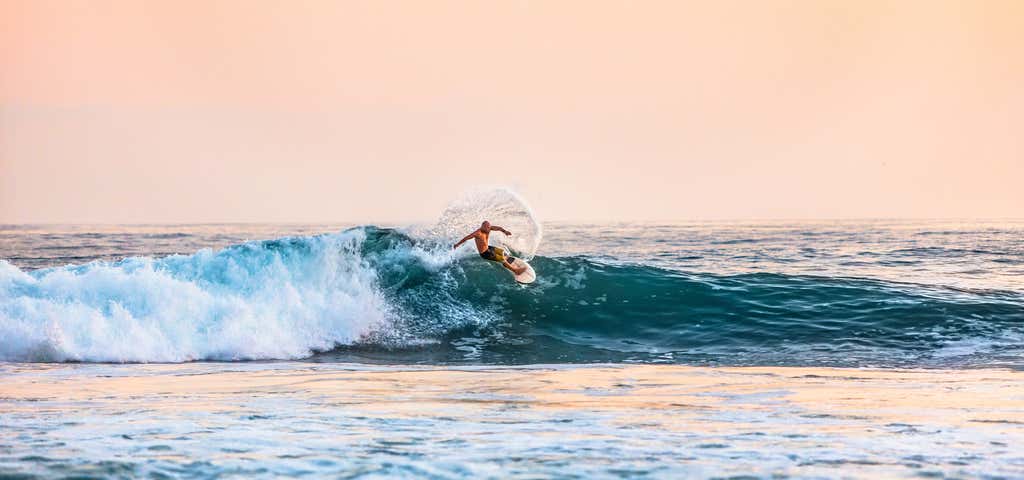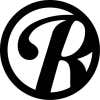Encompassing Cape York Peninsula, the Great Barrier Reef and arcing all the way down to the Gold Coast, the Queensland coastline is almost 7,000km in length - or more than 13,000km if you count its islands. We’re definitely counting them, because some of the best and least crowded surf spots can be found among them. Up north, this Coral Sea coastline is dominated by wild things – sharks and crocodiles – but that’s okay because it only really picks up north and east swells – it’s a rare day to get these on with favourable winds. Down south it’s a different story – especially during the swell season that runs from autumn to early spring. We’re talking superbanks, classic point breaks and punchy beachies. Welcome to the Gold Coast – the epicentre of Australia’s performance surfing cauldron.
Great Barrier Reef Islands
Let’s kick this off with one of the worst-kept secrets of all: the waves along Great Barrier Reef. Seriously, it actually does have some great wave-holding reefs on its outer fringes. We’re talking a long way out. To complicate matters the combination of swell, wind and tide that it takes to produce a quality wave out here is difficult to predict. It needs a huge swell and then you need to endure a dreadful boat journey to get there. And if you score, don’t waste time celebrating – get straight out there. This place turns off just as swiftly as it turns on. Fickle. Yep. But, imagine surfing with just a handful of mates in the middle of the ocean.
Big Dune
If you happen to travel along Queensland’s Central Coast during a north to east swell event then Big Dune should be on your radar. This remote beachbreak is accessible by 4WD only and can be found 20km north of Yeppoon, which is 40km northeast from Rockhampton. This beachie can produce some fun waves – even barrels on the right day. The locals can be a bit protective here so show lots of respect and try not to stir up any sunbathing crocodiles on your paddle out. (Keep your eyes peeled though as there are some big salties in this area and at times the water can be thick with jellyfish.)
75 Mile Beach
Another 4WD access beach, that begins with a ferry ride, Fraser Island is a world-heritage listed island. It is the world’s largest sand island. The beach on its east coast is 75 miles long and under normal circumstances that would almost guarantee you would find a peak to yourself. But this is Fraser Island. On land the dingos remind you who’s boss and in the water the sharks are the local residents. The beach is also used as an aircraft landing strip, so you need to keep an eye out for incoming planes. And if the skeleton of the Maheno shipwreck doesn’t sow the final seed of doubt in your mind, then good luck out there, because on it’s day these waves can be picture perfect as the island cops the south and southeast swell that marches straight past the Sunshine Coast. If you’re psyched out, then put your tail between your legs and seek out Double Island Point back on the mainland to the south instead. You won’t be the first or last to pass up Fraser Island perfection.
Tea Tree Bay
Do you remember the pictures of waves peeling down a point that the cool kids used to draw on their schoolbooks? Turns out that was Noosa. This magical place is a series of right point breaks that start at First Point, then Little Cove, then Nationals, Tea Tree Bay and then Granite Bay. The further around you go the bigger and more demanding the waves are, but our pick is Tea Tree Bay. It picks up more swell than the others and it’s a 10 to 20-minute walk into Noosa National Park to get there (depending on how distracted you get by the koalas in the trees overhead or the goannas looking for an easy meal), so it’s sometimes less crowded. Noosa’s points win the award for user-friendliness and so our tip is to get out there early and watch the sunrise if you want to snag a couple without the crowd.
Mudjimba (Old Woman) Island
About a 500m, 15-minute paddle from the Sunshine Coast at Mudjimba, you’ll find Old Woman Island. And she’s a star with two waves peeling along her flanks: a right-hand point to the north and a left-hand point to the south. Also known as Mudjimba Island, it features just the remains of a small hut that Australian surfing legend Peter Troy and his wife Libby occupied during the ’80s and ’90s. Legend has it Peter would surf the left or the right, whichever was best, before taking his tinnie to work on the mainland each day. Treat yourself to his utopia.
Point Cartwright
Point Cartwright is one of the best, most consistent and most challenging waves in the Mooloolaba area. It can also get very crowded. Mooloolaba (go on say it again, we know you want to) is a bustling metropolis sprawling like fingers around the Mooloolah River and it is at this rivermouth that you’ll find this right hander. The wave features a heavy take-off and rippable walls as it makes its way to the end-section at the Mooloolah River break wall. Further out on the point you’ll find a scary slab wave, but if you’re wanting to wind the adrenaline dial in the other direction then Mooloolaba Beach might have your name on it. The beauty of Point Cartwright is that it works in most tides (the higher the tide the more user friendly it is) and is sheltered from any wind from the south. Score a big east swell and you’re going to get barrelled.
South Stradbroke Island
While the rest of the Gold Coast waves are served up on a platter South Straddie requires a bit more effort to get to and surf. This 21km island is 2.5km wide and runs from the Gold Coast Seaway northwards. You can paddle across the seaway to South Straddie’s Moondarewa Bay, or you can catch the Straddie Surf Taxi that will take you right from the steps of the seaway into the line-up. About 300m down the beach you’ll see why this place produces such high-quality waves: sand from the seaway is pumped out right here. Pick a peak (less crowded to the north) and dine on some of the best beachbreak waves in Queensland. It’s very sharky here, keep that in mind as you paddle over to that empty peak.
Burleigh Heads
Renowned as the domain of grumpy old men, it’s worth risking a silver-haired snarl or the rampant mutterings of the aging hierarchy for a wave at Burleigh Point. When it’s on this place is mesmerising. Located to the northern side of Burleigh Head National Park this sand-bottomed boulder point break has four distinct sections that rely on sand to link them up. That rarely happens, but each section offers a decent ride and barrels in the right conditions. There can often be a sweep down the point here, as with a lot of Gold Coast points, so your best bet is to surf right through to the beach and do the run around back through the Pandanus palms to your rock hop of choice. Burleigh can often handle the bigger swells that blow the rest of the Gold Coast out. Point to bear in mind - be nice to the locals.
Kirra Beach
Back in the day this used to be the ultimate pointbreak on the Gold Coast (and some even claimed “best in the world”) – a fast, dredging, sand-bottomed beast of an icon. But it has had a chequered past. When the first groyne went in during the ’70s the wave pretty much disappeared only to remerge even better a few years later once the sand has settled in. The same thing happened with the second groyne in the ’80s and the Tweed Heads sand pump was next – taking sand from the Tweed River and pumping it into the northward drift at Point Danger and Snapper Rocks. It gave us the Superbank, but took some of the gloss off Kirra (and some say it has never properly recovered). Still, it's a world-class wave on its day despite its horrendous down-point sweep. Put it on your bucket list. You won't be the only one.
Snapper Rocks
Right on the Queensland-NSW border you’ll find Snapper Rocks just north of Point Danger. Snapper features a sucky take-off spot that whips you in front of the rocks before spilling out into the open sands of Rainbow Bay and the now world-famous Superbank. If the swell is filling in from the east or southeast then you’re in for a treat. Rides of more than 600m are commonplace – and that’s rippable walls with multiple barrels we’re talking about. Legend has it that in 2002 pro surfer Damon Harvey took off on a wave at Snapper Rocks, surfed through the Superbank and then into Greenmount and then made it all the way to Kirra Groyne. An eye witness estimates Damon’s wave took four minutes as he travelled almost 2km. No one has repeated his ride since, so here’s your chance to make history. There is a lot of hype around Snapper and it deserves every shred of it. Good luck.
Explore More Trip Guides
New South Wales Top Surf Spots
- 4 Places
Queensland's Most Beautiful Walks
- 10 Places
South Australia's Best Breaks
- 10 Places
Tasmania's Top Surf Breaks
- 10 Places












